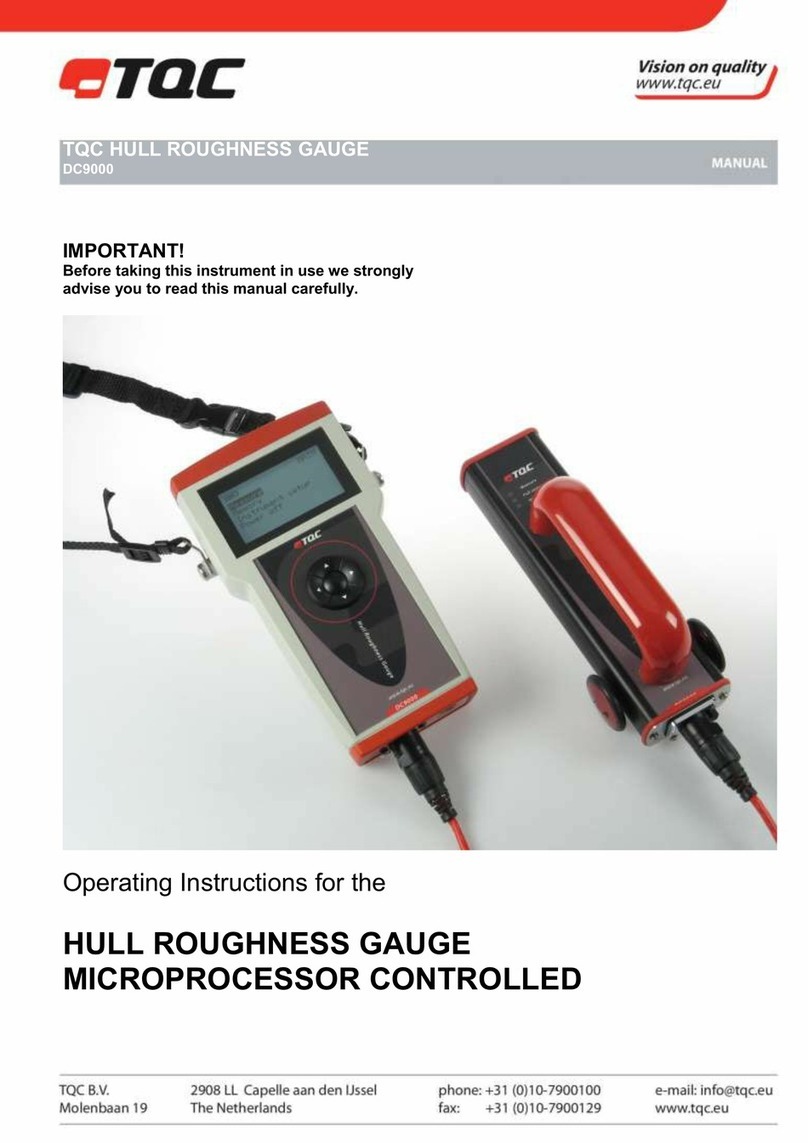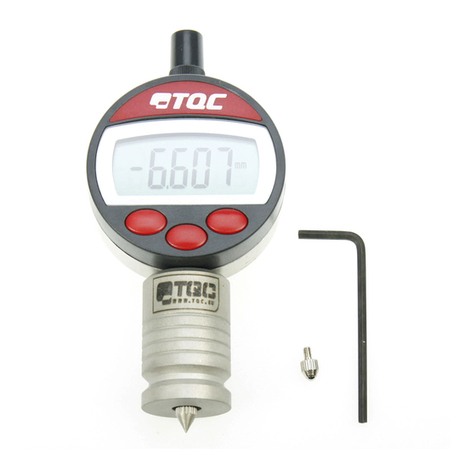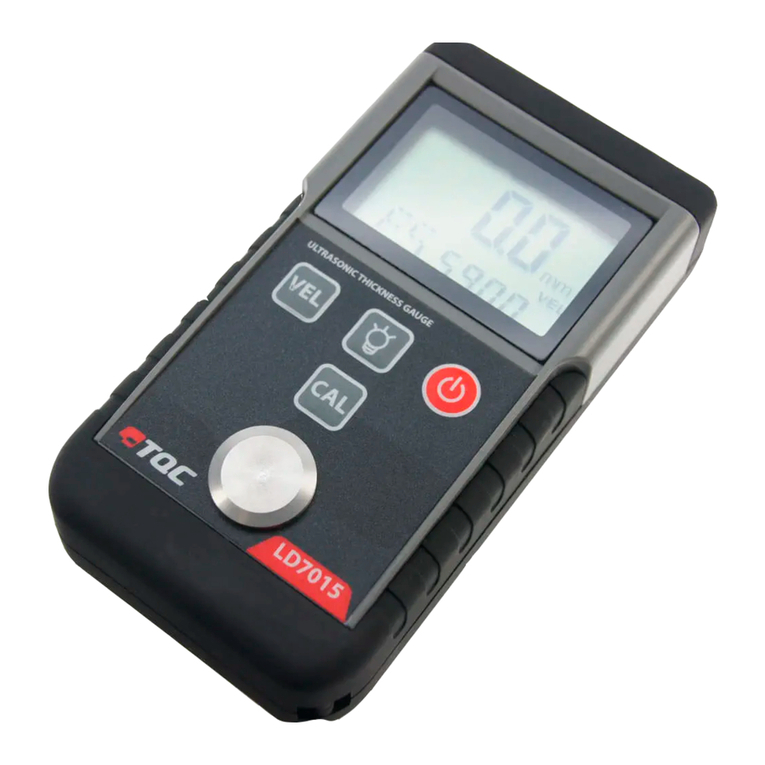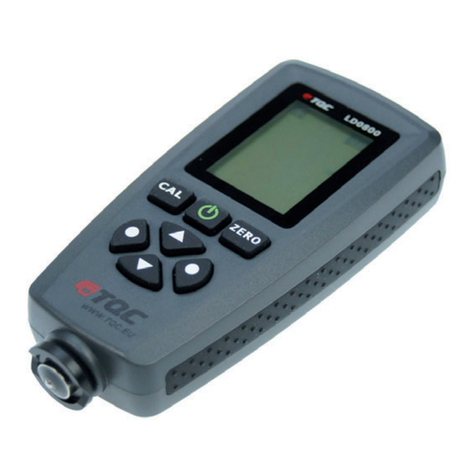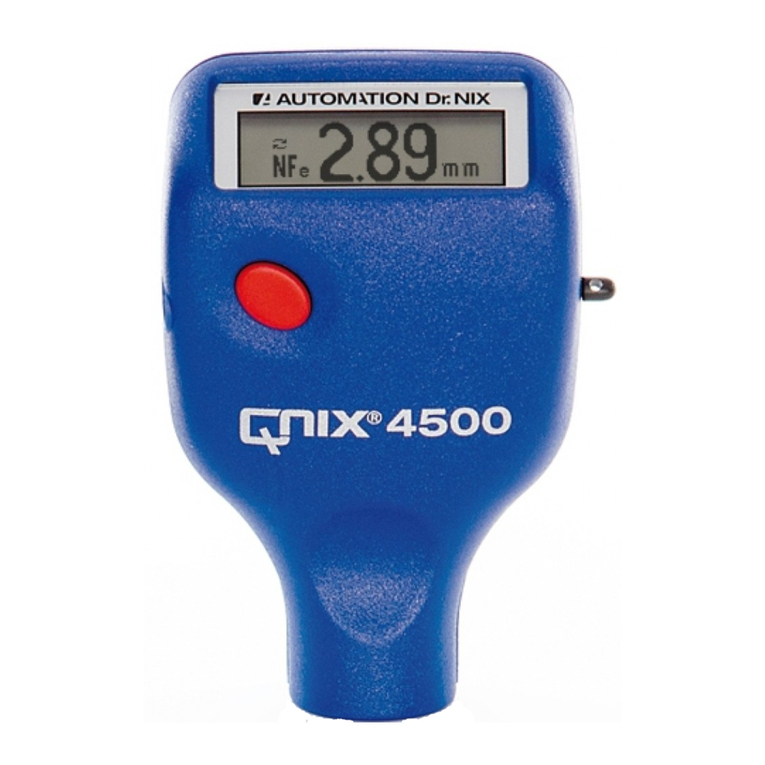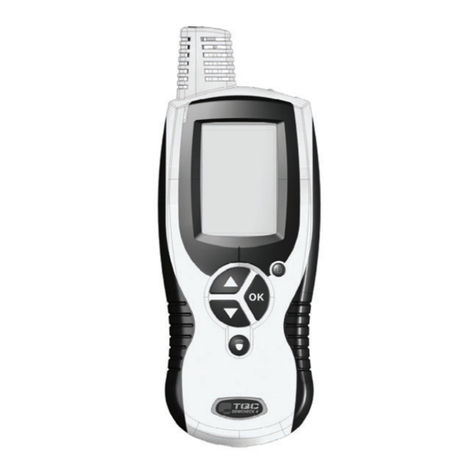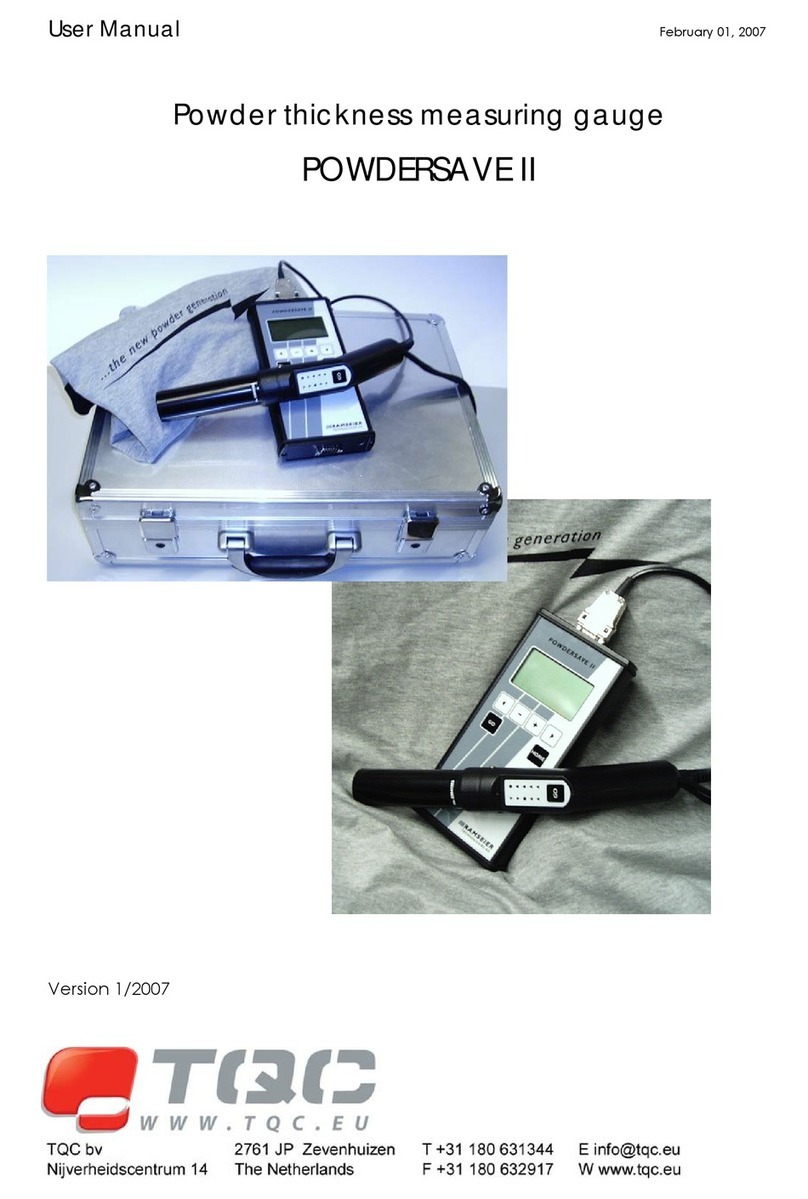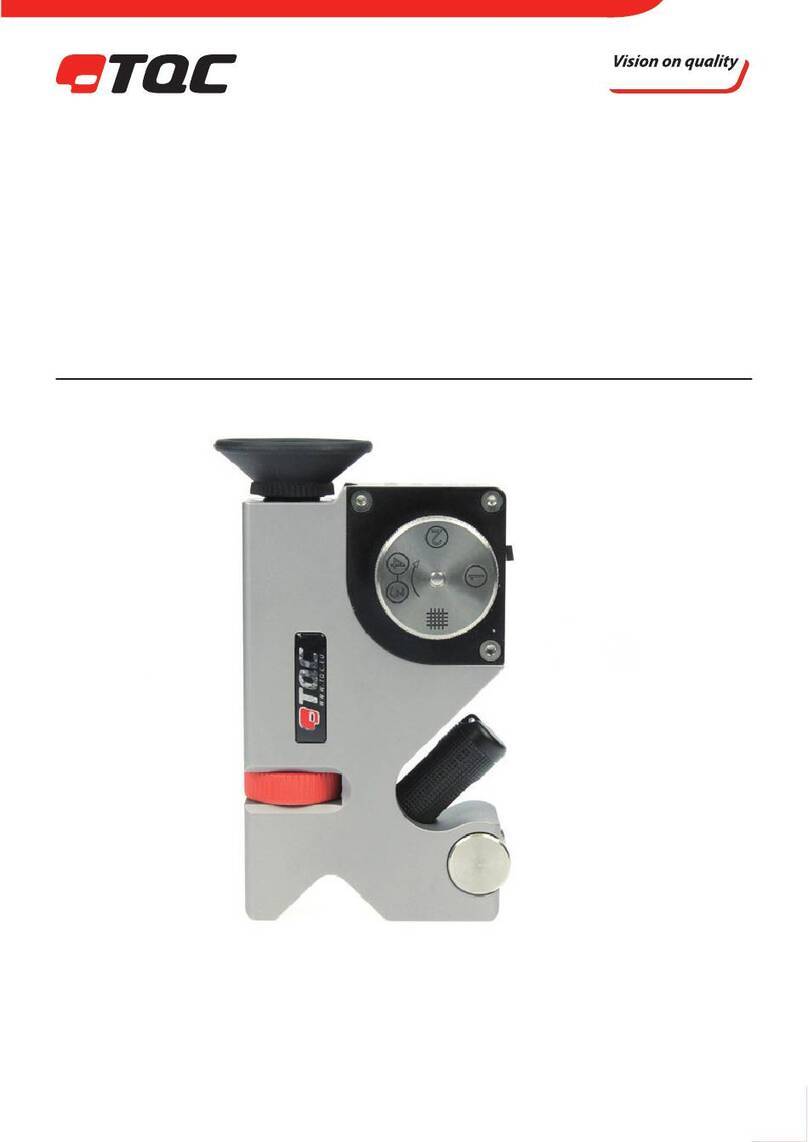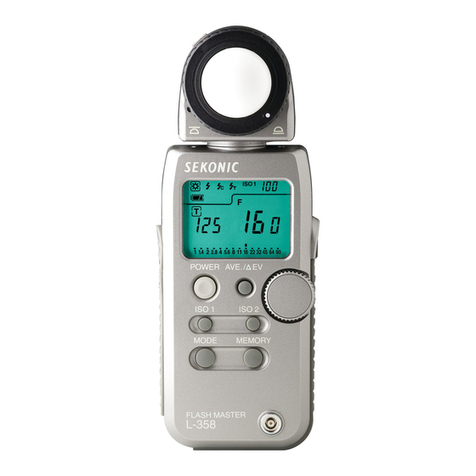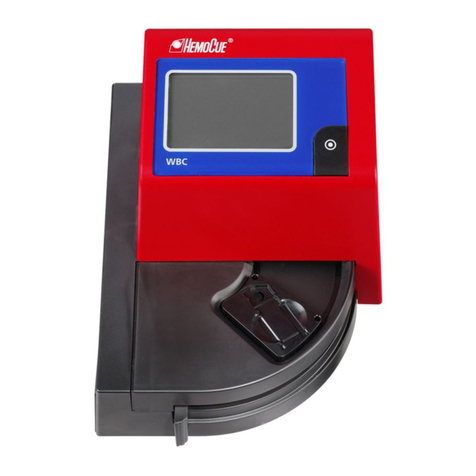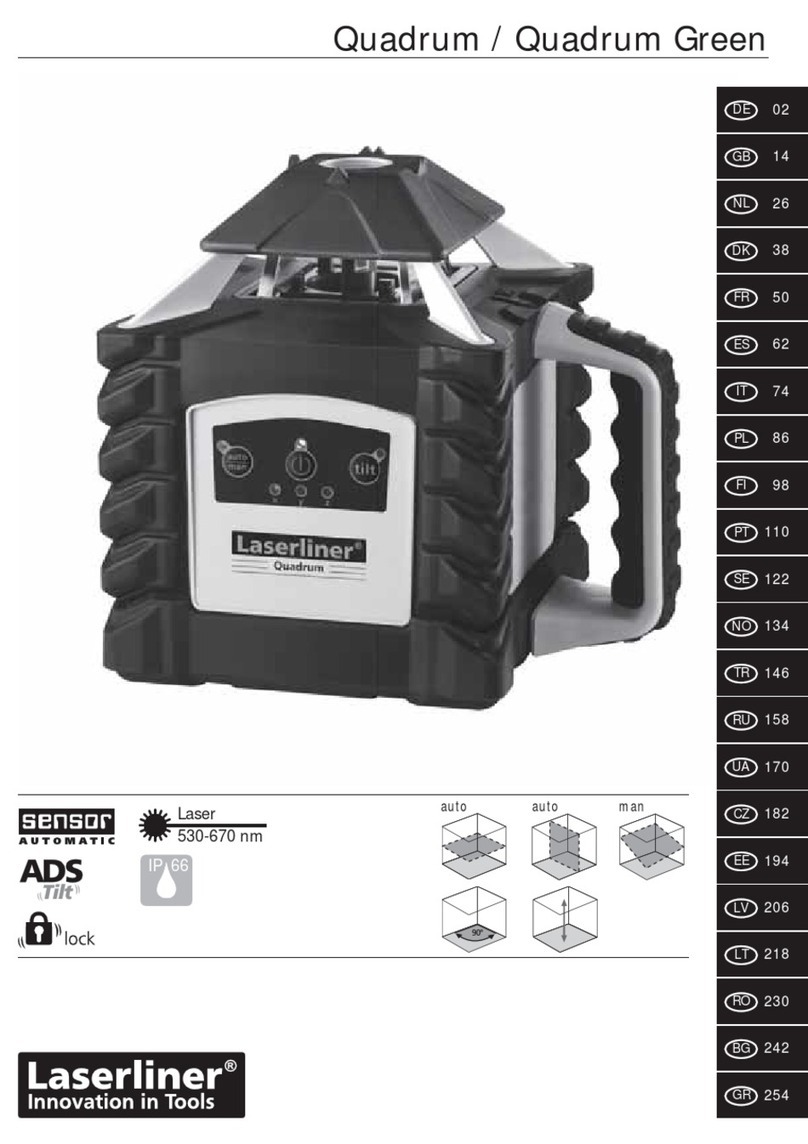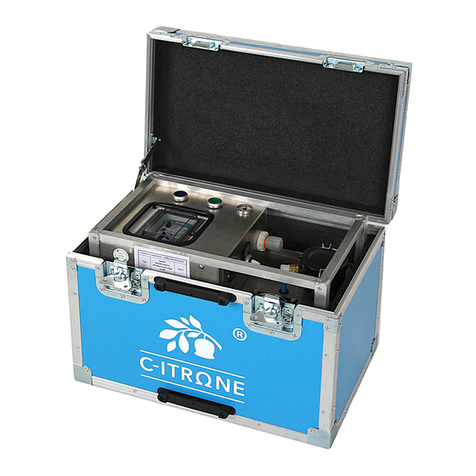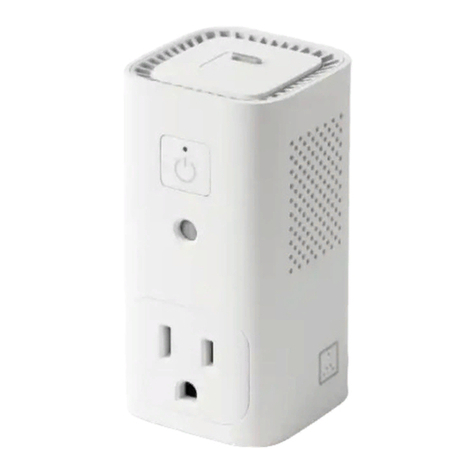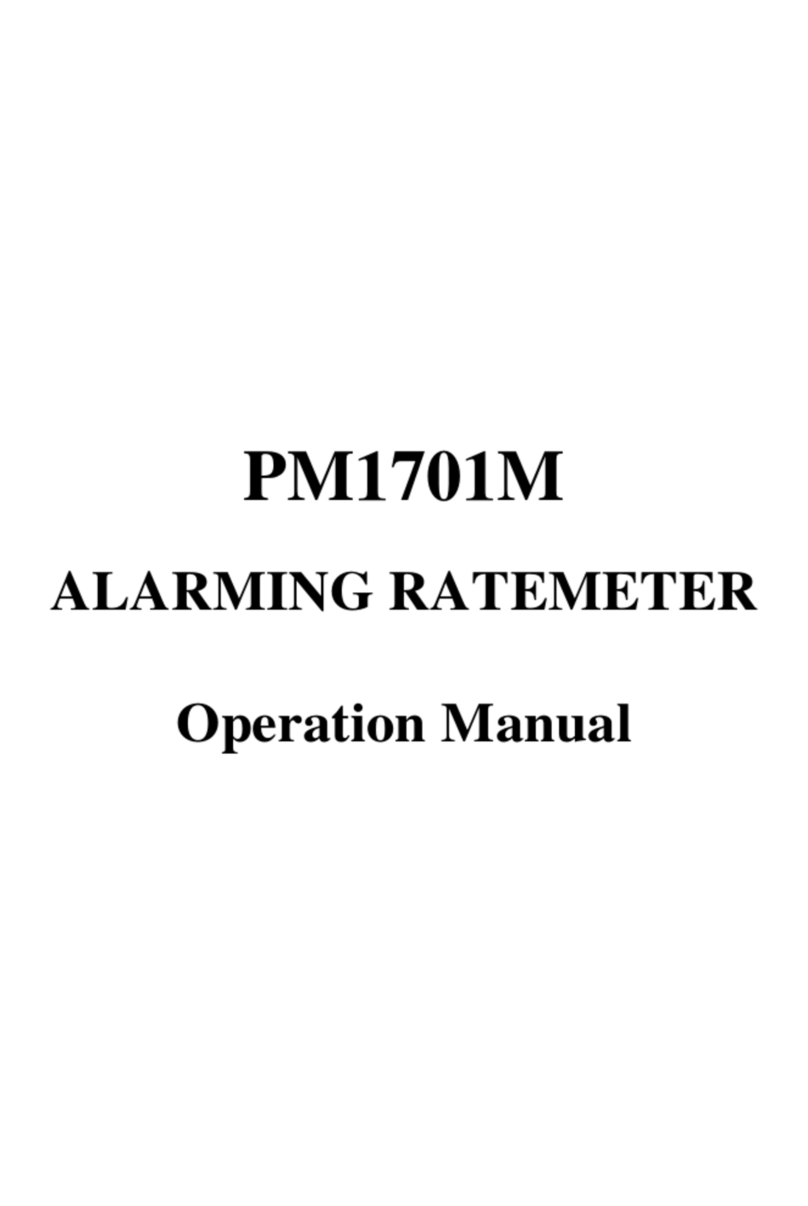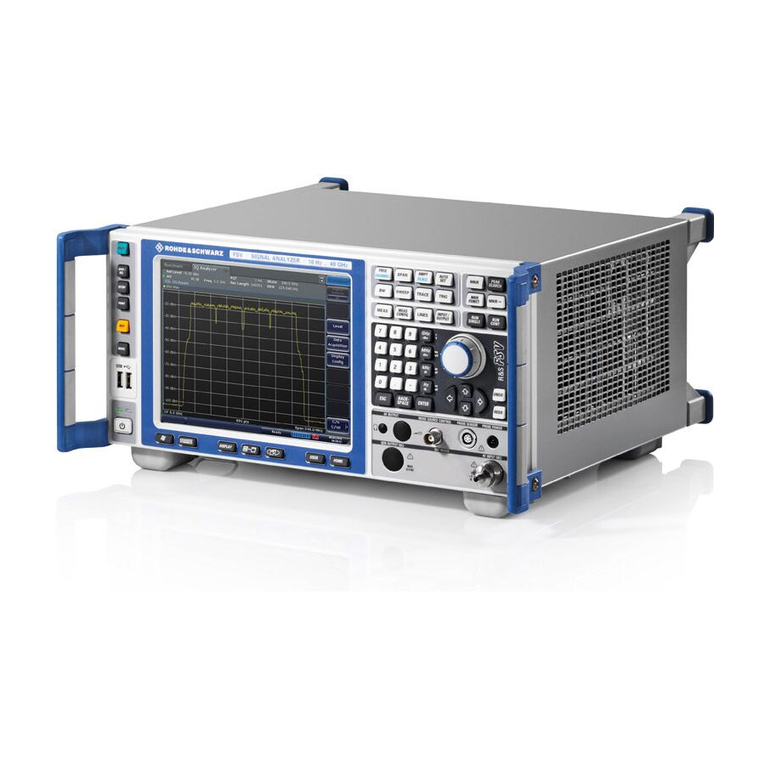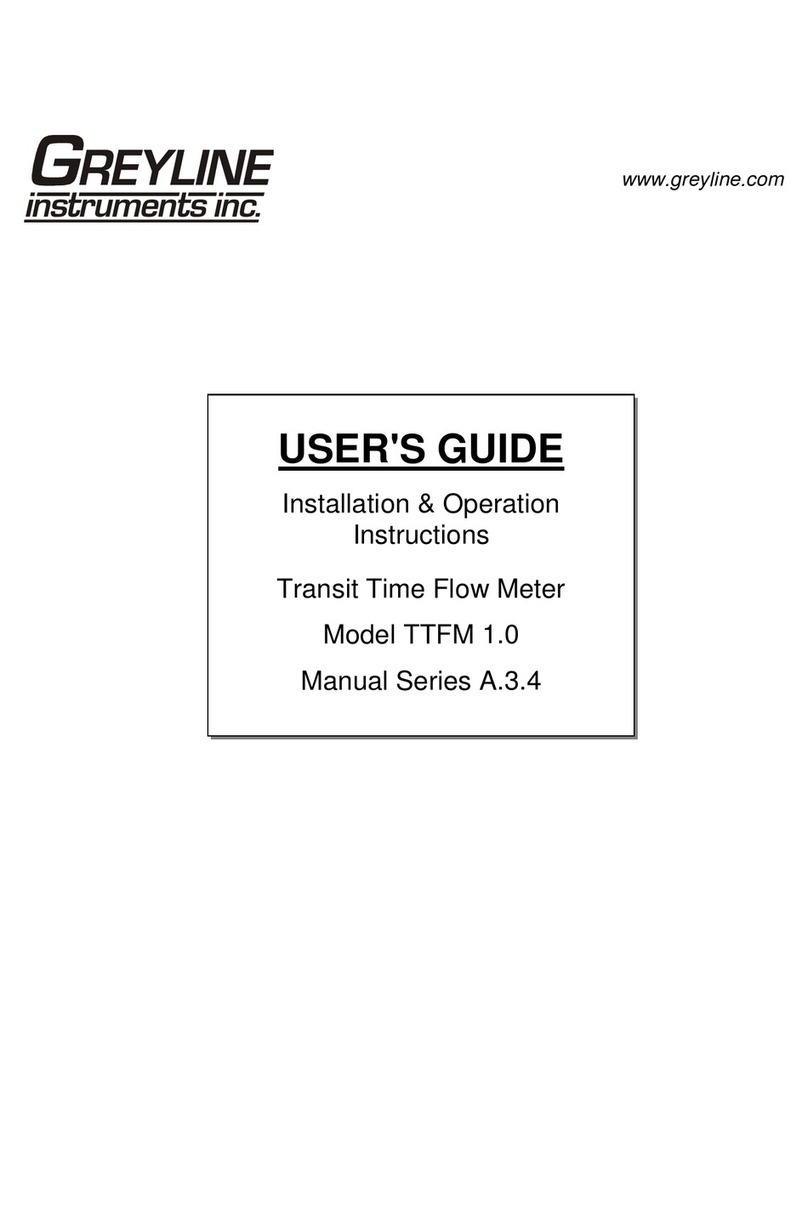TQC PowderTAG User manual

1
TQC PowderTAG
LD5850
User Guide
V1.1 0117
IMPORTANT!
Before taking this
instrument in use we
strongly advise you
to read this manual
carefully.

2
Warranty
TQC will grant a warranty for a period of 12 months for TQC PowderTAG and 12 months for all
related equipment from the date of delivery in respect of any evidence of faulty workmanship
and materials. Should a delivered consignment prove to be contrary to contract upon inspection,
the customer shall grant TQC the opportunity hereunder of removing the fault, or else the
customer may demand a replacement. Should the supply or delivery of any improvement or
replacement not prove possible, the customer may choose between having the purchase price
reduced or in demanding the contract of sale to be rescinded (conversion). Damage resulting
from natural wear and tear, mechanical or chemical damage, an act of God or non-compliance
with the operating instructions shall be excluded from the warranty as well as mechanical
interference by the customer or by third parties with TQC PowderTAG and related equipment
without TQC’s written permission. No liability will be accepted for defects, damage or injury
caused due to use not carried out in accordance with the manufacturer’s user instructions.
To claim warranty, the rejected product has to be sent to TQC together with the original invoice,
any exchange before the product has been returned to TQC is not possible. TQC reserves the
right to repair, exchange or supply an equivalent substitute. TQC is not liable for handling or
transport costs. Warranty on the purchase price is limited, all liability for consequential damages
or changes in technology is expelled.
This product complies to
- Low Voltage Directive 2006/95 / EC
- EMC Directive 2004/108 / EC
This product is RoHS 2 compliant (2011/65/EU)
EN
EN

3
EN
DO’S AND DON’TS
the measurement is performed.
formed by a regular coating thickness gauge. It mainly
comes in handy on curved objects and corners that cannot
PowderTAG values against a regular coating thickness
gauge.
to the measured value of the second layer. To calculate the
actual layer thickness of the second layer this 25% has to
be substracted from the measured value.

4
EN

5
CONTENT
1. 7
1.1 Information on the Instructions 7
1.2 Safety 7
1.3 Copyright 8
1.4 Manufacturer’s/Supplier’s address 8
2. THE INSTRUMENT 9
2.1 General 9
2.2 Details 10
2.4 Power Supply 12
3 GETTING STARTED 13
3.1 Insert batteries and connect sensor 13
3.2 Starting the PowderTAG and perform measurements 13
4 USER INTERFACE 15
4.1 Main menu 15
4.2 Measurement screen 15
4.3 Measure settings 16
4.4 Instrument Settings 17
5 18
5.1 Notes for coating thickness measurement 18
5.2 Preparation for Measurement 18
5.3 Performing measurements 19
6 20
6.1 General guide lines 20
6.3 User Calibration 21
6.4 Calibration Methods 21
6.5 Loading Calibrations 23
6.6 Editing User Calibrations 24
6.7 Deleting User Calibrations 24
EN

6
EN
CONTENT
7 CARE AND MAINTENANCE 25
7.1 Transport and Storage 25
7.2 Maintenance 25
7.3 Cleaning 25
7.4 Batteries 26
8 27
8.2 Safety 28
8.3 Disposal 28
9 DISCLAIMER 29

7
EN
1. INTRODUCTION
non-destructive. It complies with standard: DIN EN 15042-2. The small and robust instrument is
suitable for fast and precise coating thickness measurement of powder coatings on metallic
substrates before and after cure. The measurement system consists of a sensor and a display
device. The sensor is connected to the display device with a cable.
Please note that the performance-, range- and accuracy of the PowderTAG is depending on the
measured without any problems. In rare occasions the coating is not compatible with the photo
thermal technology or special settings are required.
Because heat disturbs the photo-thermal measuring principle, the measurement object needs to
be cooled down to approx 40°C when the measurement is performed.
1.1 Information on the Instructions
This manual allows for the safe and ecient use of the instrument. The manual is part of a
measuring instrument and must at all times be kept accessible and nearby the gauge for the
sta.
The personnel must have read and understood this manual carefully before starting work.
instructions in this manual.
Moreover, the local work safety regulations and general safety regulations for the application of
the PowderTAG shall apply.
Illustrations in this manual are provided for basic understanding and may dier from the actual
design.
1.2 Safety
All warnings must be read and observed in order to work safely and securely with the gauge.
Never make the warning labels on the instrument unrecognizable. Keep these instructions in a
safe place and pass them with the instrument.

8
EN
1.3 Copyright
The copyright of this operating manual remains with TQC.
This operating manual is intended solely for the user and his personnel. Its instructions and
guidelines may not be duplicated, circulated or otherwise passed on to others, neither fully, nor
partly. Infringement of these restrictions may lead to legal action may be taken if this restrictions
are infringed upon.
1.4 Manufacturer’s/Supplier’s address
TQC The Netherlands,
Molenbaan 19 T +31(0)10-7900100,
2908 LL Capelle aan den IJssel F +31 (0)10-7900129

9
EN
2. THE INSTRUMENT
2.1 General
The PowderTAG is delivered in a rugged hard carrying case.
The package includes:
The display unit has a large graphic display (128 x 64 pixels) with backlight that allows easy
reading even in the dark.

10
2.2 Details
b. Measurement button
c. Context-sensitive function buttons
d. Sensor with led pointers
e. Coating thickness sensor plug
f. Display unit socket
c3
a
f
e
b
d
i
h
g
h
g. Battery compartment lid
h. Fixation screws
i. Rating plate with serial number
j. IR warning sign
EN
c1
c2
j

11
EN
1. Measure settings
2. Number of measurements
3. Measurement value
4. Compliance to set limit values
Too high
Compliance
Too low
7
4
5
6c
3
2
6a
6b
1
2.3 Operating principle
The on-o button (a) is used to turn the instrument on or o.
Activating the sensor and triggering of measurements is carried out with the large, easy
is only possible when the measurement or calibration function is selected and the probe (d) is
plugged (e) in the display unit socket (f).
The menu is easy to operate with three context-sensitive function buttons (c). The functions of
the buttons are shown in the menus (6) on the respective buttons.
5. Statistic function:
Mean value
Max deviation
Highest value
Lowest value
6. Description context-sensitive
function buttons
7. Battery level

12
2.4 Power Supply
The PowderTAG is powered by four Li-Ion batteries 3.7V type (included). It is not suitable for
operation with conventional 1.5V AA batteries.
To charge the batteries, an external battery charger (included) must be used. This charger is
exclusively designed for Li-ion batteries.
For safe handling of the batteries, please refer to Section 6.3.
NOTES
extended period. The battery level indicator (7) in the measurement menu shows
the battery level in 4 steps.
itself from a deep discharging of the batteries.
set of fully loaded spare batteries with you in case you want to perform on-site
measurements.
meter shuts down upfront or cannot be turned on.
with the statutory provisions.
EN

13
EN
3 GETTING STARTED
of the instrument and highlights the essential functions shortly.
3.1 Insert batteries and connect sensor
1. Take the instrument and the batteries out of the storage case.
2. Take the instrument from the rubber harness and remove the screws (h) on the battery
compartment lid (g) manually or, for example, using a coin.
3. Insert the batteries into the battery compartment. Pay attention to the correct polarity
(see battery compartment).
4. Close the battery compartment lid (g) and secure it with the screws(h).
5. Slide the display unit back into the rubber harness.
6. Take the sensor out of the case and push the plug on the cable end (e) into the
corresponding socket (f) at the top of the display unit. There is only one correct way:
the red spot on the plug and the red spot on the socket should face each other.
3.2 Starting the PowderTAG and perform measurements
1. Press the on-o button (a) for 2 seconds to turn the PowderTAG on. The instrument is
immediately ready for operation. The display shows the selected application (1).
2. In the initial start-up the factory calibration is preselected. This is suitable for simple, fast
measurements. It should however be noted that, depending on the measurement task, larger
measurement inaccuracies may occur.
3. Activate the sensor by pressing the measurement button (b) once. An active sensor is
it directly. The instrument is now ready to measure.

14
4. Point the sensor to the object. Make sure the three LED pointers combine into one point on
the object. This is the correct measuring distance.
5. Press the measurement button to trigger the measurement (b). Start and end of the
measurement are indicated by a brief ash of the positioning LEDs and an acoustic signal.
6. The measurement result (3) is shown on the display. The meter is ready for the next
measurement.
7. If you want to delete the measurement press delete (c6) shortly. If you want to start over
with the statistics (if enabled), press delete (c6) long and all measurements will be deleted.
EN

15
EN
4 USER INTERFACE
4.1 Main menu
After turning the unit on the measurement screen appears. The context sensitive function but-
ton on the right (c3) has the function ‘back’. This can be read in the display (6c). It takes you back
to the main menu.
The context sensitive function buttons (c) should be used to navigate (6) through the menu:
Measure:
Previously commenced measurements can be continued immediately.
Measure settings
The following applications (calibrations) are available:
This function probably will be used mainly.
errors occur during measurements, we advise to choose this setting and
continue with the measurements.
for QC applications as performed by a regular coating thickness gauge. It
mainly comes in handy on curved objects and corners that cannot be
User Calibration: See chapter 6
Limits: Activate and set min max limits
Instrument Settings
mode, sound, power saving, check instrument, factory reset and information.
4.2 Measurement screen
The measurement screen shows layer thickness measurements and statistical information can be
read.

16
By pressing the left context sensitive function button (6a) the display of statistical values
(if enabled) can be switched between the following statistic functions:
Mean value
Max deviation
Highest value
Lowest value
Pressing the center function button shortly, deletes the last recorded measured value. Pressing it
long deletes all recorded values.
Pressing the right function button opens the main menu.
4.3 Measure settings
The Measure Settings menu allows you to load, edit, create and delete calibrations, and set limits.
immediately be redirected to the measurement screen. The desired calibration (1) appears in the
display and you can start a measurement immediately.
For more information on creating and editing calibrations, see Chapter 6.
NOTE It is not possible to delete or edit factory calibrations.
4.3.1 Limit values
Selecting the function ‘limit values’(at the end of the measure settings menu list) opens a cor-
responding menu for selecting and activating limit values.
function is selected. To change the Min and Max values, press the arrow function button (c1)
until the cursor is at the position you want to change. Press the arrow function button (c1) again
button (c2).
Compliance with or under-/overshoot of activated limit values are indicated symbolically (4) in
the measurement screen
Selecting the Back button (c3) saves the settings you have made and returns you to the Measure
Settings menu.
EN

17
EN
4.4 Instrument Settings
The following functions can be changed in the Instrument Settings menu:
Language: English, German, Dutch*
while measuring
Units: Micron (m) or mils*
Power Saving: Always 0n, 3, 6, or 10 min*
even after changing batteries, the instrument needs to be returned to
TQC.
Factory reset: Deletes all measured values, user calibrations, and user settings
Information: Displays the version and date
4.4.1 Check instrument
1. Go to the instrument settings menu and choose Check instrument
needs to be returned to TQC.

18
EN
5 MEASURING MODE
5.1 Notes for coating thickness measurement
measuring instrument are an advantage, but also a basic knowledge of general handling of
coating thickness gauges and the corresponding metrological requirements.
This mainly concerns the following topics:
- Selecting the suitable measuring method
- Statistical evaluation methods of measurement series
- Interpretation of measured values
We recommend in case of new (and random sample-based) combinations of materials, to
check measured values of the PowderTAG against values obtained by other layer thickness
measurement methods (such as a regular coating thickness gauge). If necessary the
PowderTAG values can be corrected via a user calibration. (see section 6.3)
5.2 Preparation for Measurement
Select the calibration that suits the measurement task. Depending on the application, you can
select an existing factory calibration (powder, powder thick, cured). Measurements with
maximum measuring accuracy can be achieved with calibrations that have been created from
the combination of materials to be examined. (See Chapter 6).
NOTE When a second layer of coating is applied the PowderTAG will add 25% of the layer
calculate the actual layer thickness of the second layer this 25% has to be substracted
from the measured value.
E.G.: the rst layer (cured) is 100 µm. The PowderTAG measures 85 µm on the second
layer. Then the actual thickness of the second layer is 60 µm. (25% of 100 µm = 25 µm.
85µ - 25 µm = 60 µm)

19
EN
5.3 Performing measurements
5.3.1 Freehand measurements
Photo-thermal measuring processes are non-contact thus non-destructive.
While performing a freehand thickness measurement it is important to keep the correct working
distance to the object. The LED-pointer helps to achieve this. The pointer consists of three on the
sensor positioned LEDs. When the three LED pointers combine into one point on the object the
correct distance is achieved and a measurement can be performed.
5.3.2 Measurements with distance cap
Generally, the use of a distance cap (Art. No LD5852, to be ordered separately) is recommended
for touch-sensitive materials. This makes it possible to maintain an accurate working distance
without the risk of touching an object.
5.3.3 Measurements with Tripod
For the contactless measurement of small parts and geometries, we recommend using a tripod.

20
6 CALIBRATIONS
6.1 General guide lines
Measure settings menu of the PowderTAG shows all the Calibration options. Three factory
calibrations are available: Powder, Powder Thick and Cured.
It is possible to create user calibrations based on the factory calibrations. The PowderTAG has the
option of single-point or two-point calibration.
To ensure an optimum calibration the following should be observed:
The quality of a calibration inuences how precisely the layer thicknesses of a material system
can be determined. A careful approach is therefore essential.
Please note that the powder coatings may vary greatly in nature and composition. Since the
color in the photo-thermal layer thickness measurement also plays an important role, under cer-
tain circumstances, despite calibration it occasionally may come to unsatisfactory measurement
Calibration should be performed on a calibration object. The material properties of this calibrati-
on object should match the material properties of the object to be measured as closely as possi-
ble. The better both objects match the better the calibration, thus the accuracy of measurement.
is therefore important to ensure that the measurement position matches the created calibration
and the measurement position of the reference method. Moreover, it should in certain
circumstances be ensured (by means of statistical methods), that the layer thickness information
of the reference measurement and the calibration measurement are obtained from the same
measurement area. This is particularly important with rough objects.
6.2 Factory calibrations
The PowderTAG has three factory calibrations (powder, powder thick and cured, see 4.1)
EN
This manual suits for next models
2
Table of contents
Other TQC Measuring Instrument manuals
Popular Measuring Instrument manuals by other brands
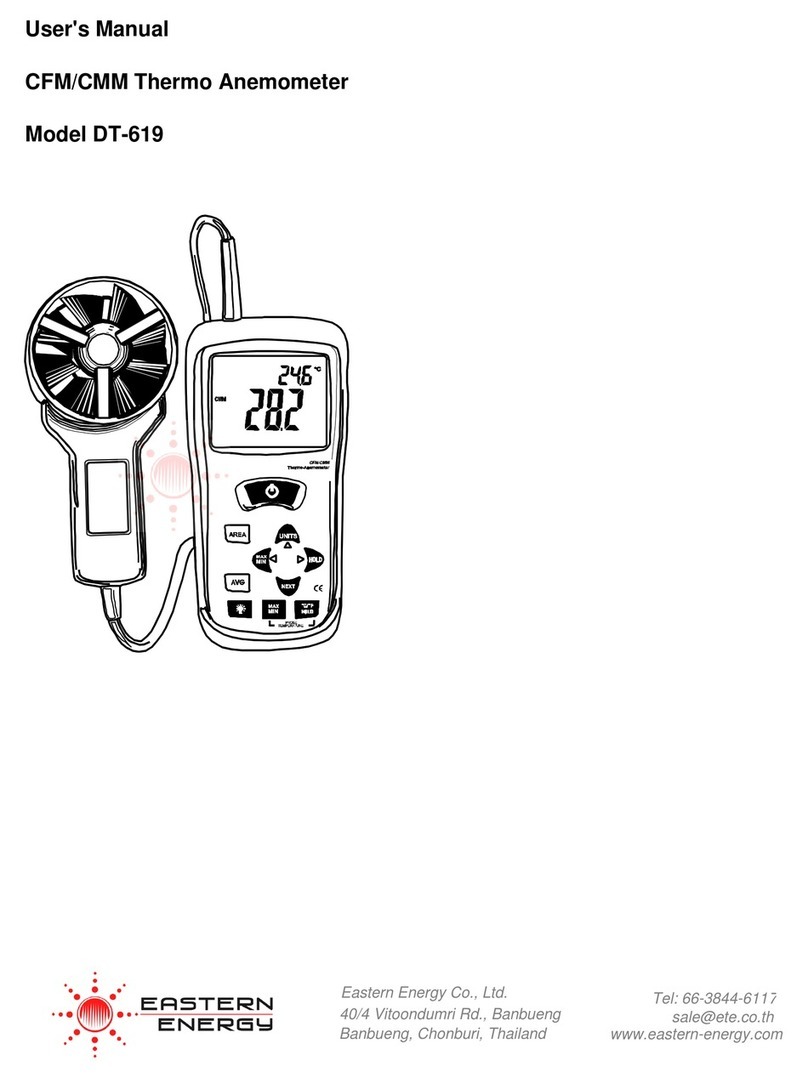
Eastern Energy
Eastern Energy DT-619 user manual
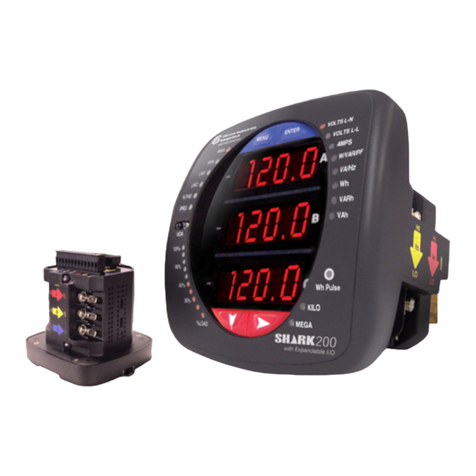
Electro Industries
Electro Industries Shark 200 Installation & operation manual
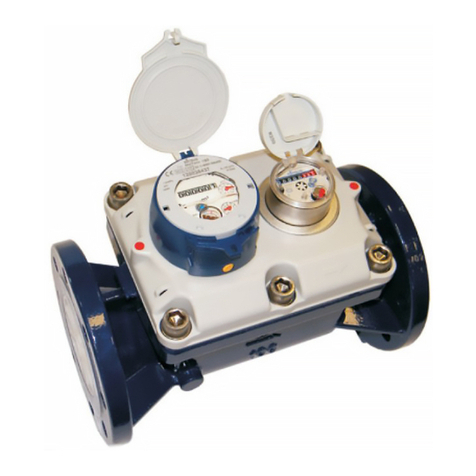
Sensus
Sensus MeiTwin 50 installation instructions

Vaisala
Vaisala MGP261 user guide
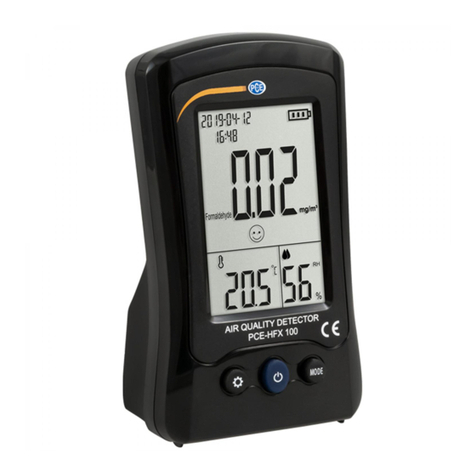
PCE Instruments
PCE Instruments PCE-HFX 100 user manual
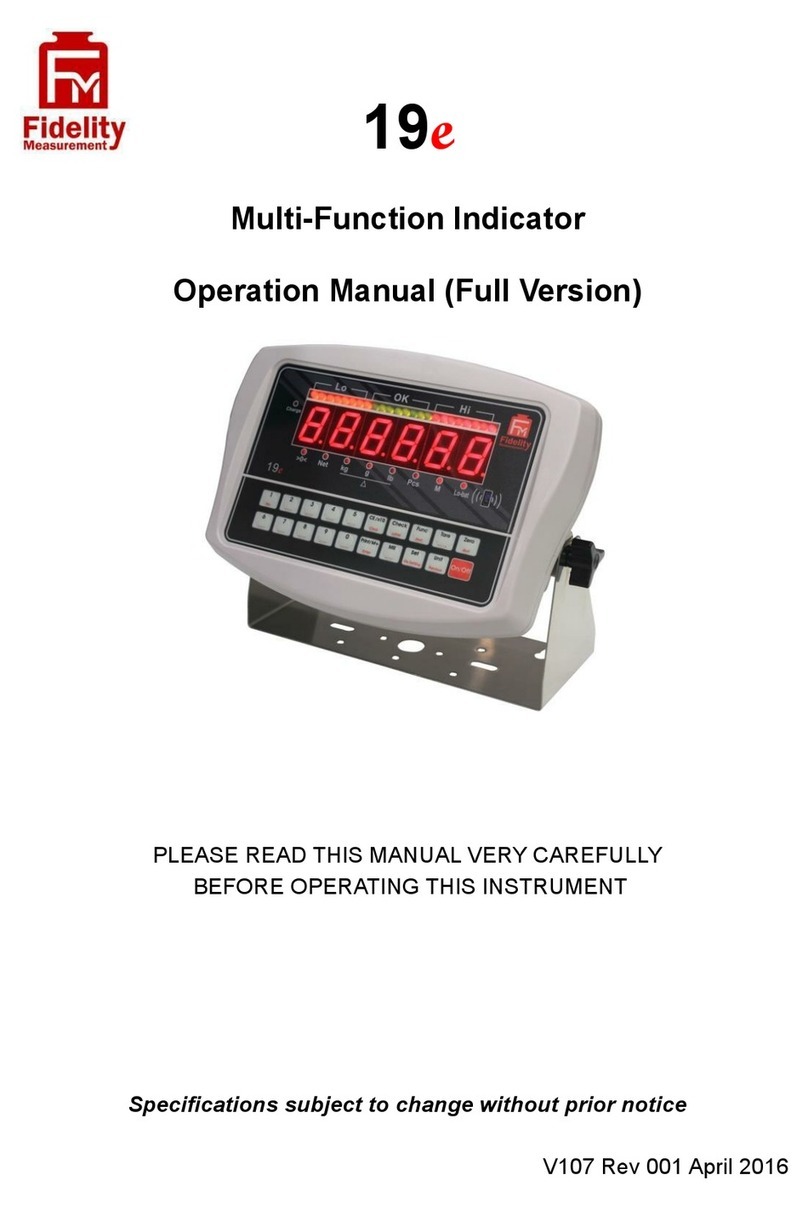
Fidelity Electronics
Fidelity Electronics 19e Operation manual
